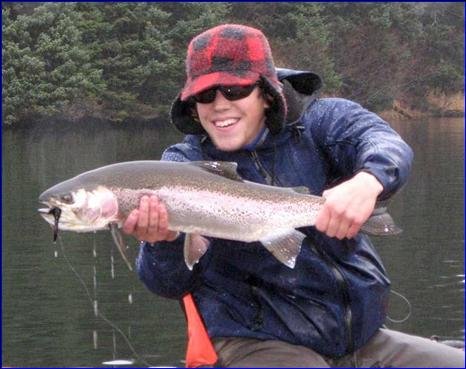
Small-scale aquaculture contributes to sustainable development; however, despite its high potential, aquaculturists face unique and complex challenges related to biosecurity and good aquaculture practices.
In this context, the Asia-Pacific Economic Cooperation (APEC) has published a guide on biosecurity and good aquaculture practices for small-scale tilapia and rainbow trout fish farmers.
Objective of the Guide
The document “Guidebook on Biosecurity and Good Aquaculture Policies and Practices for small-scale farmers of tilapia (Oreochromis sp.) and rainbow trout (Oncorhynchus mykiss)” contains 10 steps that identify the main biosecurity risks and good aquaculture practices for small producers.
These guidelines assist small-scale tilapia and rainbow trout producers in implementing and maintaining good aquaculture practices and biosecurity for the economic security and fish health of small-scale producers, as well as for international trade opportunities among APEC economies.
Finally, the guide includes the results of the risk analysis conducted by representatives from APEC economies who participated in a workshop in June 2022.
Principles for Risk Analysis
According to the guide, risk analysis is an analytical process that provides information regarding undesired events. It is a decision-making tool.
The components of risk analysis are: (1) hazard identification, (2) risk assessment, characterization, and analysis, (3) risk management, and (4) risk communication.
How to Develop the Biosecurity Plan?
The authors of the guide establish ten steps to develop a biosecurity plan model, which are as follows:
Stay Always Informed
Join our communities to instantly receive the most important news, reports, and analysis from the aquaculture industry.
- Know the biology of tilapia (Oreochromis sp.) and rainbow trout (Oncorhynchus mykiss), and keep their environmental conditions to maintain welfare and GAP.
- Know what pathogens affect tilapia and rainbow trout in your economy, and/or region, and the critical points where pathogens and/or diseases caused by them can enter or leave the farm.
- Understand quarantine and the role of fish movements in the introduction and spread of infectious diseases.
- Introduce only healthy fry to your system. Evaluate and monitor the disease status of the farm following levels of diagnosis I, II, and III.
- Use preventive measures to avoid pathogens entry to a farm or disease presentation and, if it is necessary, use antimicrobials responsibly.
- Use practical disinfection procedures.
- Document and register your biosecurity and good aquaculture practices.
- Environmental risk/escapes/proliferation of harmful algae.
- Surveillance area / Mobile laboratories / Participatory epidemiology.
- Know the regulation in your economy related to aquaculture biosecurity and good aquaculture practices for small-scale farmers.
Conclusion
The guide provides a practical summary of the steps that every tilapia or rainbow trout fish farmer should follow to develop their biosecurity plan, with the aim of reducing the risk of disease outbreaks.
The document was developed as part of the completion of activities under the project “SCSC 07 2020 – Strengthening the Management of Aquaculture Diseases to Promote Commercial Exchange and Food Production Sustainability, for Small Enterprises,” funded by the Asian Pacific Economic Cooperation (APEC).
Reference (Open Access):
Gómez-Sanchez Muriel and Paola Barato. 2023. Guidebook on Biosecurity and Good Aquaculture Policies and Practices for small-scale farmers of tilapia (Oreochromis sp.) and rainbow trout (Oncorhynchus mykiss). APEC Sub-Committee on Standards and Conformance. 36 p.
Editor at the digital magazine AquaHoy. He holds a degree in Aquaculture Biology from the National University of Santa (UNS) and a Master’s degree in Science and Innovation Management from the Polytechnic University of Valencia, with postgraduate diplomas in Business Innovation and Innovation Management. He possesses extensive experience in the aquaculture and fisheries sector, having led the Fisheries Innovation Unit of the National Program for Innovation in Fisheries and Aquaculture (PNIPA). He has served as a senior consultant in technology watch, an innovation project formulator and advisor, and a lecturer at UNS. He is a member of the Peruvian College of Biologists and was recognized by the World Aquaculture Society (WAS) in 2016 for his contribution to aquaculture.




